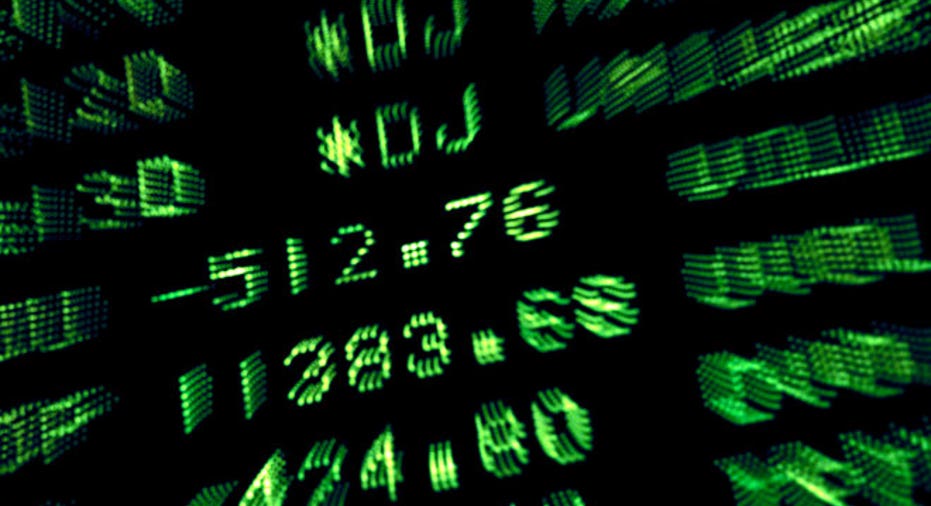Dow Industrials: Storied Index or Irrelevant Dinosaur?

With just 30 members and an antiquated weighting system, the 116-year-old Dow Jones Industrial Average continues its fight for relevancy in today’s dynamic stock market.
Despite its unparalleled brand awareness, savvy traders and portfolio managers don’t even usually know where the Dow is trading on a typical day, focusing instead on the vastly broader and more inclusive S&P 500. Indeed, last week the New York Stock Exchange announced plans to stop calculating circuit breakers based on the blue chips, which have underperformed the S&P 500 in six of the past 10 years.
Moreover, the Dow's weighting system has handcuffed it from adding Apple (NASDAQ:AAPL) and its leading $492 billion market capitalization to its exclusive 30-member club.
“How is the Dow a relevant index if it’s not covering the biggest company?” said Joe Saluzzi, co-head of trading at Themis Trading.
Saluzzi said the first thing he looks at each morning is where the S&P 500 futures are trading, saying “it gives you a much better market snapshot” than the Dow.
Dow, S&P 500 Still Rivals?
Still, Jamie Farmer, managing director of S&P Dow Jones Indices, said he believes the Dow “remains incredibly relevant” thanks to its storied history and unmatched “global recognition.”
The struggle to keep the Dow relevant may help explain why the index has jumped around like a hot potato in recent years. Once fierce rivals, today the blue chips are actually housed under the same roof as the S&P 500.
After being acquired by FOX Business parent News Corp. (NASDAQ:NWSA) as part of the $5.6 billion takeover of Dow Jones & Company in 2007, the business was put into a joint venture in 2010 that was 90% controlled by CME Group (NYSE:CME).
Last year, Dow Jones Indexes was then combined with McGraw-Hill’s (NYSE:MHP) S&P Index business. McGraw-Hill owns 73% of the new joint venture, while CME controls 24.4% and News Corp. indirectly owns 2.6%.
“Having them under common stewardship allows for some collaborative research and provides for a better offering to the marketplace,” said Farmer.
Weighing the Differences
While the S&P 500 seeks to benchmark the entire investable universe with its 500 members, the Dow houses just 30 of the largest cap stocks like General Electric (NYSE:GE) and Citigroup (NYSE:C).
That wider membership gives the S&P 500 a combined market cap of $13.03 trillion, compared with about $4 trillion for the Dow, which ranges between ExxonMobil’s (NYSE:XOM) $399 billion valuation and Travelers’ $27.78 billion price tag.
But unlike the S&P 500 and most other indexes, the Dow’s value is calculated through a quirky weighting system that focuses on stock price, not market cap.
That’s precisely why stocks like Apple that have triple-digit prices aren’t included in the index.
Farmer said if Apple and Google were to join the Dow, as some have proposed, they would together represent a stunning 47% of the index, with the other 28 stocks making up a combined 53%.
“That would distort the performance of the index and that’s not index construction purity. We seek to have diversification,” said Farmer.
Perhaps the absence of some big-name stocks played into last week’s announcement by NYSE Euronext’s (NYSE:NYX) New York Stock Exchange to base its circuit breaker thresholds solely on the S&P 500 come February. Previously, the Big Board calculated the levels it would slow or shut down trading based on the Dow.
“They should’ve done it years ago,” said Saluzzi.
116 Years of History
While composition constraints may frustrate some, others see real benefits in the Dow’s lengthy track record.
“The Dow has one existential advantage: it’s the oldest. Before the Federal Reserve existed you had a Dow Jones Industrial Average,” said Nicholas Colas, chief market strategist at ConvergEx, noting the index’s 17-year head start on the Fed. “There’s actual value to that. If you want to understand how stocks traded in the Depression, you’ve got one choice and it’s the Dow.”
The blue-chip index is also the most widely recognized in the world, surpassing other benchmarks like the FTSE 100. When retail investors tune in to check on their portfolio, they want to know where the Dow is, not the S&P 500, which was founded in 1957.
“That extensive history allows for a referential touchstone. We’ve got so much history, the actual number we see provides a great deal of value. We know intuitively where the number is,” said Farmer.
Due in part to its storied history, there doesn’t seem to be any momentum at this point to make drastic changes to the Dow such as expanding its membership beyond 30 stocks.
Farmer said: “We never comment on potential changes.”
Colas said if he had to make one change to the Dow to make it more relevant, he would ditch the price-weighting system.
But he acknowledged even that would be an imperfect fix.
“If you lose the price weighting, you lose some of the comparability of the future versus past,” said Colas.